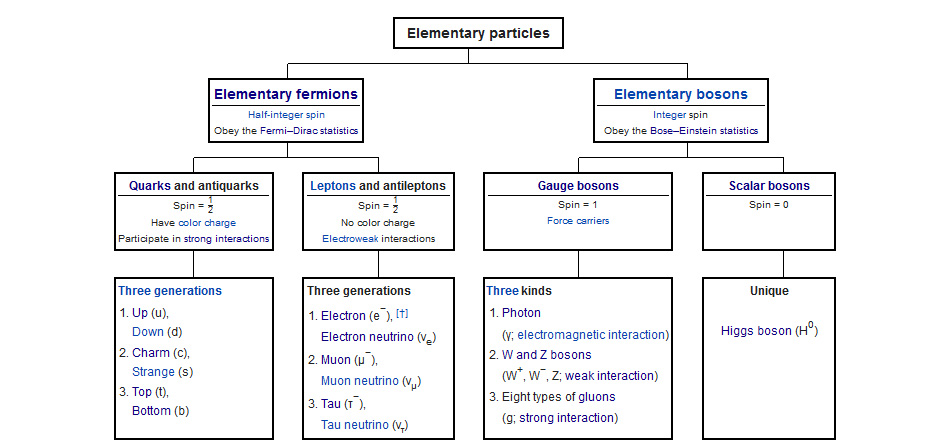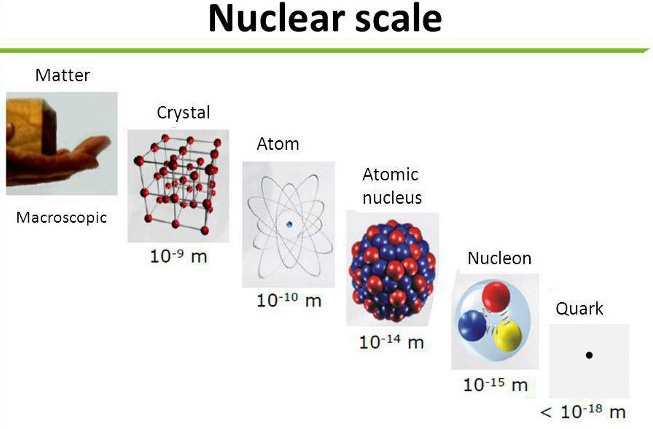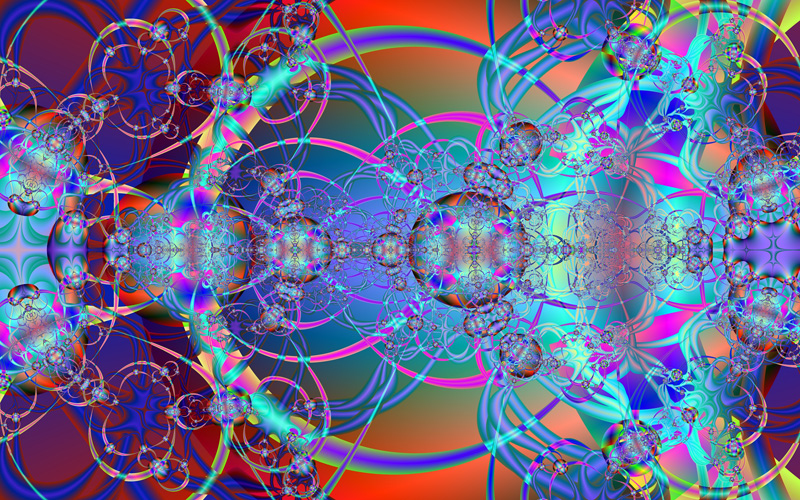The Standard Model of Physics


Ever since the Greeks posited that all matter was composed of indivisible atoms, the search has been to determine the ultimate components of matter. In 1897 JJ Thomson discovered the first sub-atomic particle, the electron, Rutherford the proton in 1917 and Chadwick the neutron in 1935. In the meantime, the English genius, Dirac, predicted antimatter, which was discovered soon after. Since then, many particles have been identified and studied. The Standard Model brings together all the known particles into a single scheme within the over-arching framework of quantum physics.
The Standard Model is a complex and far-reaching theory that tries to answer two fundamental questions: What is matter and how does it interact? Surprisingly, it has changed little in the last 50 years, giving rise to the notion that theoretical physics is not really advancing.
The Standard Model describes three of the four known fundamental forces of the universe: the electromagnetic, weak, and strong interactions, while omitting gravity. It also classifies all known elementary particles. It was developed in stages throughout the latter half of the 20th century, with the current formulation being finalised in the mid-1970s, after quarks were detected. Since then there have been a number of important confirmations of its predictions, most notably the observation of the last predicted particle, the Higgs boson, in 2012.
Although the Standard Model is believed to be theoretically self-consistent and has demonstrated huge successes in providing experimental predictions, it leaves some phenomena unexplained and falls short of being a complete theory of fundamental interactions. It does not incorporate the theory of gravitation as described by General Relativity, does not fully explain the fact that matter is so much more abundant than antimatter, nor account for the accelerating expansion of the universe as (possibly) caused by dark energy. Dark matter is another omission. In case you think the matter-antimatter imbalance is a trivial question, it's worth pointing out that without it, all matter would have annihilated itself soon after the Big Bang, which would have been a pity!
Particles are divided into two types, fermions and bosons. Roughly speaking, the fermions are the constituents of matter, whereas the bosons carry the forces that explain how the fermions interact. Each particle also has an antiparticle, with the same mass but with opposite physical charges (such as electric charge). When an electron and an antielectron collide they annihilate one another, turning their mass into energy.
By definition, an elementary particle is not composed of other particles. So how many elementary particles are there? The answer is unclear due to antiparticles. There are 12 fermions and 13 bosons, giving 25. The addition of antiparticles for the fermions gives a total of 37. The antiparticles of the the bosons are already included in the list of 13 bosons. This is because the photon, the Z boson, and the Higgs boson, are their own antiparticle. Also, each gluon is the antiparticle of another gluon and the W+ and W- bosons are each other's antiparticles. Thus it seems that the Standard Model has 24 fermions + 13 bosons = 37 elementary particles. The total depends on what you mean by a different particle, eg you could count the six quarks as variants of a single particle.
Ever since quantum physics revolutionised science, we have known that at sub-atomic scales the very idea of 'particle' is not meaningful, as all such particles also behave like waves, a paradox that has never been resolved. However, for the purposes of this exposition, matter is regarded as if it consisted of discrete particles.

The remaining six fermions, called leptons, do not carry colour charge. They are: the electron, muon and tau, plus three types of neutrinos. The muon and tau can be thought of as heavy but short-lived electrons. By virtue of carrying a (negative) electric charge, the electron, muon, and tau all interact electromagnetically.
The three neutrinos do not carry colour or electric charge, so their motion is influenced only by the weak nuclear force and gravity, which makes them notoriously difficult to detect. Neutrinos pervade the universe, probably outnumbering protons by a factor of a billion, but have minuscule mass and hardly interact at all. Trillions of neutrinos are passing through our bodies all the time.
All atoms consist of electrons orbiting around atomic nuclei consisting of protons and neutrons, which are constituted of up and down quarks. The only stable fermions are up and down quarks, electrons and neutrinos. The rest of the fermions decay very quickly into the aforementioned particles and are observed only at very high energies in expensive physics experiments. Essentially, only the lightest particles are stable. NB It is actually incorrect to say that an elementary particle "decays". It does not split into its component parts (as there aren't any) but transforms into other particles. How and why is a mystery.
The sub-atomic realm is a world in perpetual flux, with particles constantly being created and destroyed, as well as interacting with each other. In addition, virtual particles briefly come into being out of nothing due to quantum uncertainty.
Each fermion has a corresponding antiparticle, which doubles their numbers to 24.

Gauge bosons are force carriers that mediate the strong, weak, and electromagnetic fundamental interactions. The Standard Model explains such forces as resulting from matter particles exchanging other particles, ie gauge bosons. Bosons do not follow the Pauli exclusion principle that constrains fermions; thus they do not have a theoretical limit on their spatial density. All bosons that have mass decay into stable fermions. The three types of gauge bosons are:
Photons mediate the electromagnetic force between electrically charged particles. They have no mass, travel at the speed of light and do not decay. They are most familiar as light.
The W+, W- and Z gauge bosons mediate the weak interactions between the various fermions. They are massive and decay extremely quickly into fermions.
The eight gluons mediate the strong interactions between quarks, ie they glue them together. Like photons, gluons are massless and stable; they are just energy and travel at the speed of light. Because gluons have an effective colour charge, they can also interact among themselves.

Although it is incomplete, the Standard Model is amazingly accurate in its predictions and is regarded as the most successful theory in all of science.
